Media | Articles
These 5 Cars Lost the Most Value in the Beginning of 2024
Two weeks ago, we explored some bright spots in the collector car market following our recent update to the Hagerty Price Guide. We’re back this week to look at some of the cars that didn’t fare as well. Valuation changes continue to be subject to nuanced inputs rather than the more consistently broad market movement we observed two years ago. This selection of cars that saw notable downward movement is no different, but their value losses may portend wider market changes in the future. From the blue chip to the affordable, we’ll have our eyes out to see whether these trends take hold as we head into the driving season.
As always, if you have questions about how we arrived at these changes, you can read more about the methodology behind the Hagerty Price Guide here.
1970 Plymouth Superbird: -24%
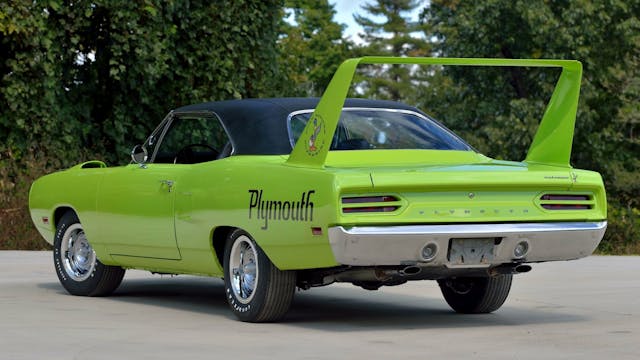
They were cars that could have only existed in their particular eras, and would be deemed too crazy to build again (although Dodge has been known to build some pretty wild things). The MOPAR wing cars—the Dodge Daytona and Plymouth Superbird—sought to take the NASCAR rulebook to its limits, but would need to be sold to the public as well in order to compete. As with many other homologation specials, the changes made to these cars were purely intended for on-track dominance without regard to street use.
While Dodge would build just 505 Charger-based Daytonas in 1969 (500 being the minimum number for homologation), Plymouth would be far more successful, producing 1,935 Road Runner-based Superbirds the following year. The long and the aerodynamic nose offered poor spatial awareness for street driving, arguably making them a headache to live with day-to-day. Winding the clock forward, that didn’t matter a lick—the Daytona and Superbird are among the most recognizable cars of the Muscle Car era and sought-after centerpieces for serious collectors.
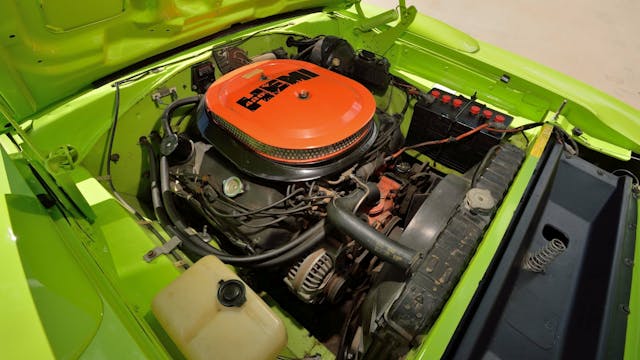
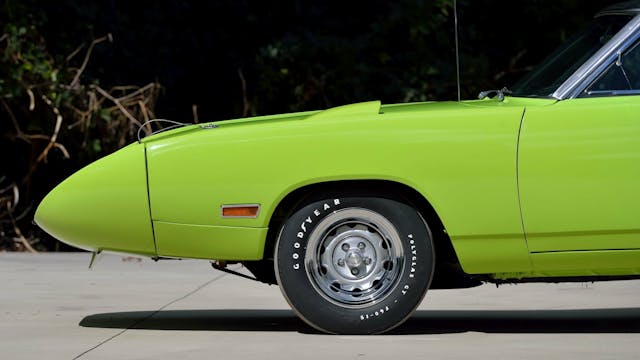
While these cars are usually offered in fits and spurts on the public market over the course of a given year, we witnessed over 20 offered in January alone. That’s a lot, in fact that is too many at one time. Yes, it is possible to have too much of a good thing, and when you are talking about the price point where the Superbird resides, it’s possible to have more cars than buyers. That usually equates to poor sales, and that’s exactly what happened. Both Hemi and 440-6 barrel cars sold for prices massively under market. That doesn’t mean that the floor has officially fallen out on these cars—further market observation, particularly of more typical individual sales spread out over time, needs to happen to confirm that—however, this is a good indication that the top tier of the muscle car market has begun to wane.
1967 Chevrolet Corvette L88: -19%
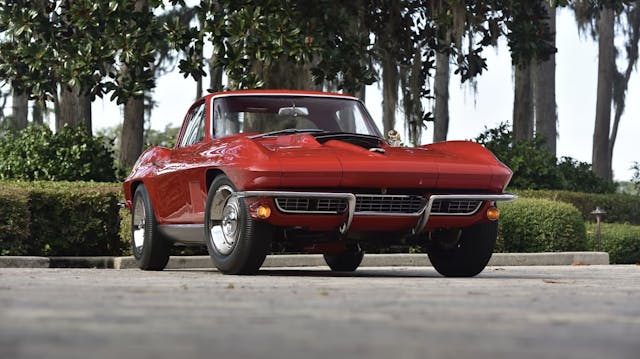
Let’s talk Blue Chip collector cars for a moment. These are the best of the best, the most exclusive collector cars in the hobby. Just having a pedigree in your brand isn’t enough—there has to be a sense of pomp and circumstance and genuflection when these cars come up in conversation. While the Chevrolet Corvette is not the first car that comes to mind when talking Blue Chip collectors, the L88-equipped 1967 ‘Vette is one of those cars.
Here’s a quick refresher on the L88 Corvettes for the two or three of you reading this who are unfamiliar with them. Chevrolet offered their biggest and baddest engine to exist in a Corvette to date in 1967. In the form of RPO code L88, a 427 cubic inch big block making a conservatively rated 430 horsepower (true figures are believed to be in excess of 500). The purpose of this engine was to put weapons-grade power in the hands of racers who could afford the nearly $950 option at that time. Out of the three years the L88 was an option, 1967 is the first, the rarest, and arguably the best-looking Corvette to have the option.
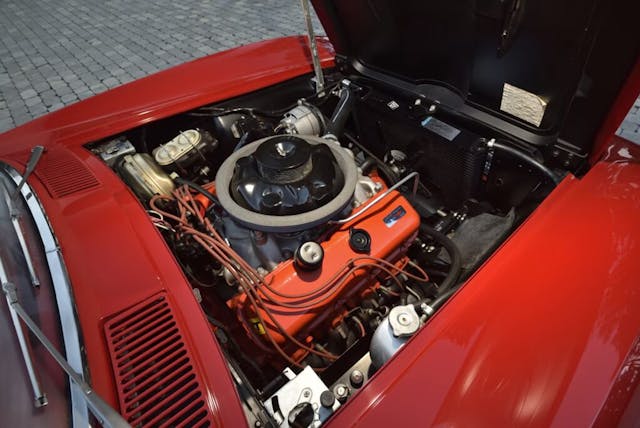
Since these cars are out of reach of the average collector—only 20 examples were produced, and costs are well into seven-figures—why do we care about their results? Even the top of the market has implications that trickle down to the more affordable segments of the hobby over time. After years of little activity and sitting high in the market, three examples hit the market at the same time, posting very weak numbers. This caused us to recommend an average of a 19-percent drop across the condition values of ’67 L88s. Softening at the top of the market for 1960s American performance cars indicates that we need to keep a close eye on other, less exclusive Corvettes and muscle cars from this era. Nothing happens in a vacuum, and sometimes it just takes a while to translate to the rest.
1979-1992 Mercedes-Benz W126: -16%

Introduced in the final months of 1979, the second-generation S-class Mercedes is the ultimate expression of the reputation for fit, finish, and reliability that we associate with Mercedes-Benzes from this era. Fitted with everything from a Diesel in the American market to a reasonably powerful V-8 for the time, there are plenty of options and price points to choose from as well.
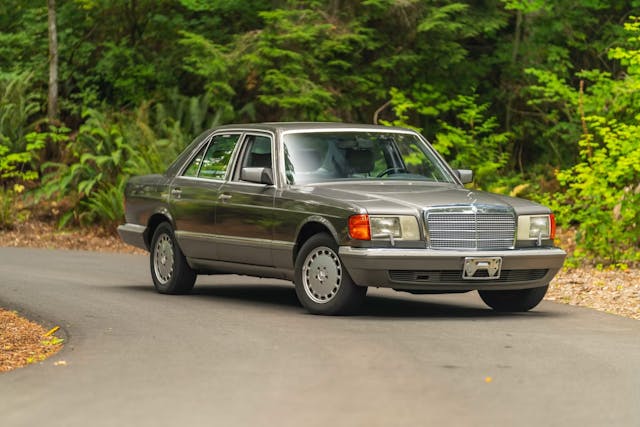
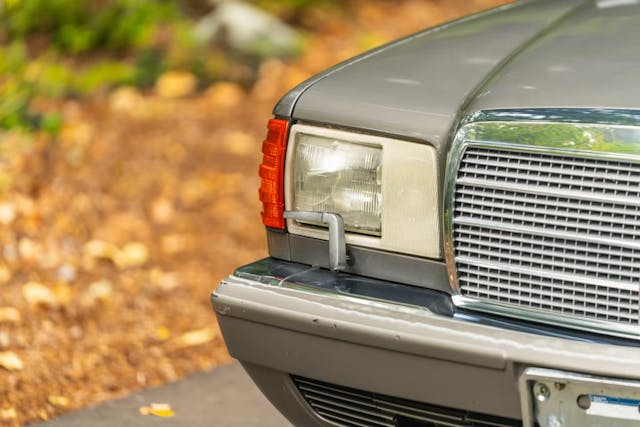
This platform has long been revered and coveted by enthusiasts, but their values stayed reasonably low until 2020, when wider acceptance and popularity caused them to really take off. This was helped by an abundance of excellent, low-ish mile cars hitting the market and commanding prices that defied logic for a car that was previously merely a solid used car.
What goes up usually comes back down, and while the W126 market is incredibly nuanced—each engine option requires a close look—the general trend is that prices are settling back down. This is especially true with the six-cylinder models. While the V-8 cars are still doing well, the direction is clear: These cars are finding a different footing. The market growth of collector Mercedes from the ’80s hasn’t fully matured, so it only makes sense that some cars will be searching for a new equilibrium as the overall market changes.
1983-1990 Alfa Romeo Spider: -14%
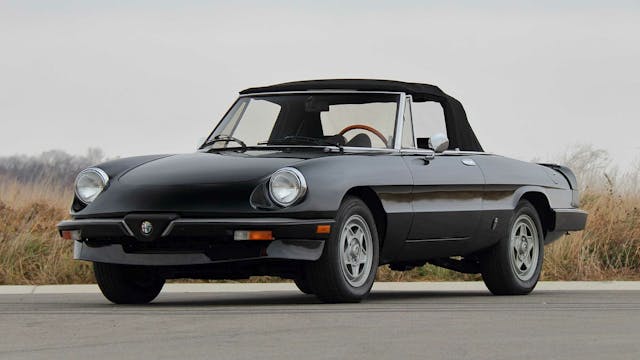
Not as widely coveted as other Italian models but nonetheless important, the Alfa Romeo Spider is Italy’s contribution to the small, sports roadster segment. Produced from 1966 through to 1993, the little Alfa drop top outlasted just about all of its competition, most of which was from the U.K. With the introduction of the third-generation Spider, Alfa Romeo would update the platform for the first time in over a decade with refreshed styling and a change from mechanical to electronic fuel injection.
These cars have remained an affordable entry into Italian motoring, with even the best examples remaining under the $30,000 mark. The problem, though, is ensuring that you find a good specimen. This isn’t necessarily an Alfa problem—it’s a cheap car problem. Vehicles that have remained cheap for a long time are often neglected, as the cost to restore usually exceeds the cost of just buying a good car. Because of factors like this, we’ve witnessed a divergence between excellent examples, which saw minimal movement and fair and driver-grade cars experiencing more of a dip. This is usually a case of buyers getting pickier. This, too, isn’t necessarily an Alfa-specific problem—it’s something that we’ve observed across the market, even if it appears more pronounced in this example.
1995-2001 Acura and Honda Integra Type-R: -13%
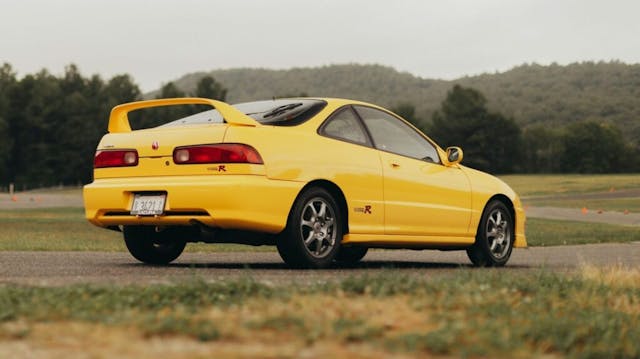
In the late ’90s, the Integra Type-R (ITR) set the bar for what a hot, front-wheel drive, sport compact should be, and boy did Honda set it high. It’s the purest form of a front-wheel drive Honda offering Excellent handling, precise controls, and an engine that effortlessly revs to the moon. To this day, enthusiasts who have experienced one are adamant that the ITR is the best FWD car built.
These cars started to catch on about eight years ago within the enthusiast community as solid collector cars. As Japanese cars, led by the Toyota Supra, Nissan Skyline GT-R, and Acura NSX have gained wider acceptance as desirable collectors, prices skyrocketed for the ITR as well, though not quite as high as the others. Perfect, no-mile examples have commanded prices nearing and topping six-figures, with one even hitting $150K. Japanese-market Honda ITRs influenced the market slightly, increasing inventory as they started to trickle in when they turned 25 years old. However, they have become only marginally cheaper than the US-market Acuras.

A quieting market extends to more than the ITR—other segment standouts like the Mk IV Supra and FD-series RX-7 have shown some tells of the market adjusting downwards as well. None, however, have receded as much as the ITR: Its data was less ambiguous that there has been indeed a softening. With one of the original leaders of the surge in Japanese popularity showing weakness, it’s prudent to fix our eyes on the bigger picture. If you have been previously priced out of your dream Japanese car, they may be coming back within reach. Just don’t expect to see prices from 10 years ago.
***
Check out the Hagerty Media homepage so you don’t miss a single story, or better yet, bookmark it. To get our best stories delivered right to your inbox, subscribe to our newsletters.
Marketplace
Buy and sell classics with confidence


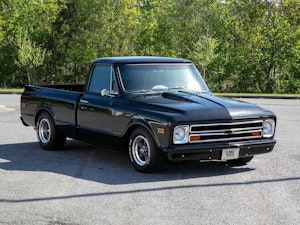


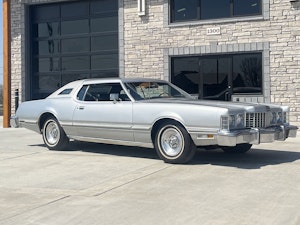
















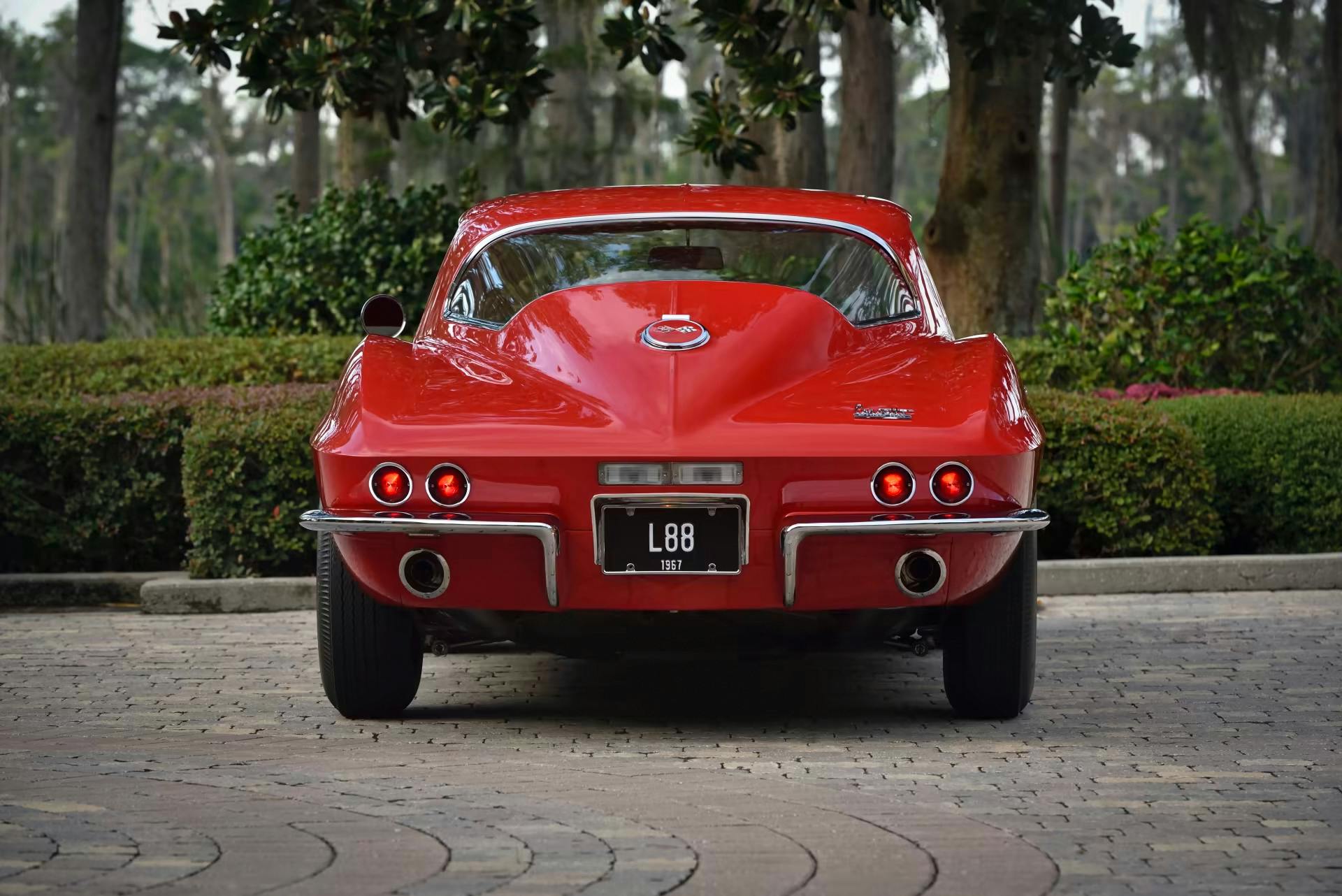
Back in the 80’s I had a neighbor who restored jukeboxes and was making a killing because of the nostalgia caused by happy days and American graffiti, nowadays you can’t give a jukebox away. My point being that as the older generations pass away I suspect that values of cars will drop outside of a few museum examples. There will not be enough interest from the younger generations to sustain higher prices as they will want the cars of their youth. Haggerty understands this as their magazine often highlights newer cars from the 90’s and up, especially of the Asian variety. Even new cars and motorcycles. I have no interest in the later cars, but Haggerty understands that to keep insurance policies going they will have to draw on the younger generation and insure these later cars as classics. As for me, my old rambler may be worth nothing by the time inheritance comes around, that will be for my kids to deal with. I don’t care, between now and then it’s happy motoring.
Hagerty is also not picking up on the BaT auction ‘selling prices’ being subsidized by the auction house. If they want the car ‘sold’ they will cover on the backside the shortfall from the reserve.
Prove it? That’s a bold claim in the auction world, you better cite your source when saying a place like BaT is playing games with sales prices.
I find it interesting that so many of these rare, one-of-a-kind collector cars are being dumped on the market at one time. It makes me wonder what’s going on with the owners of these classics? Are they being hurt by these strange economic times and needing to create some liquidity, or just looking to cash in, unfortunately and coincidentally, at the same time? Is this truly a market indication, or just happenstance?
They are dying off. Let’s face it, we all expire at one point in our lives. The car culture was really big in the 50s 60s and 70s. Now due to the cost of vehicles and insurance and the fact that it’s very hard to modify a modern car compared to the accessible engine bays of the 1960s, the hobby is in decline. And when Grandpa’s hot car is listed in his will, a lot of the kids will just want the cash. So it sells for whatever they can get and that’s it.
Thank you for all your articles on Corvairs, apparently you don’t give a darn.
The headline on this article is “These 5 Cars Lost the Most Value in the Beginning of 2024.” Do you feel the Corvair has lost significant value this year? Otherwise there is no reason to mention Corvairs here.
The Tri-fives seem to hold their value. Don’t think they will ever loose value. Although some of the prices are way out of line.
I wonder about that too, Barb. I once passed a convoy of Corvairs on their way to a meet. Every model and style. I’m sure their owners love them as much as any other enthusiast.
I have a few old cars. Do you offer a service to put a value on them? I’m not looking for the exact value, just a ball park.
1962 Impala SS 283 power glide, white with black bucket seats good condition, have owned since 1972
1970 Chevelle SS 396 4-speed dark green with vinyl top owned since 1980
1977 Z28 4-speed bought new about 40,000 miles all in good condition
Just list them all on a site without your phone number. If you get a ton of responses then take it off for a few weeks and relisted at a higher price. If you get very few responses or crickets, well then you know it’s not worth what you listed at.
Hobby: well, it was when I got into it. No longer, apparently. As Dylan once said “Money doesn’t talk — it swears!” Sheesh.
And some ‘Car guys’ appear to be more interested in arguing than in cars.
While the Plymouth and Corvettes were and are still special cars, this cannot be said of the Mercedes W126.
I liked those vehicles and I could buy a good example at a very fair price. One thing was eimmediately clear to me. They are classy cars on the exterior and interior. But I was massivly disapointed driving the vehicle. A good GM fullsize from the Sixties is a much better ride, than my 300. I hardly ever drove it. I sold it for less than I bought it and I will never regret having sold it. I wish I would get back some cars I sold fourty years ago. But I will NEVER regret having sold my Mercedes. They were produced in enormous numbers, so there is always one you can buy. But I will never buy one again. In America the Mercedes star makes people believe those cars were much better than a Cadillac or a Lincoln. But that is not true. In Europe Mercedes was also a known brand known for taxis and transporters. Most cars with a star are acutally nothing special. Well everything younger than 1990 does not interest me at all.
It’s absolutely hilarious that random internet posters think they know more about car values- than a multi billion dollar insurance company that insures a few billion worth of cars each year.
I guess insuring millions of cars each year stands for nothing, and we should trust their judgement instead
I buy cars to drive them (currently 5, but it rotates every 18 months or so). Cars at the top of the market are usually garage queens and rarely get any real driving time. Those are, pardon the pun, investment vehicles. I prefer to drive cars and invest elsewhere. Consider this: if in March of 1969 instead of spending $4,000 for a Z28 or a Corvette or a Shelby, you put that money in an S&P index fund and left it there, today it would be worth about $950,000. Every day, all day. Maybe an L88 would beat that, but no worries about maintenance, security and restoration costs, or an aging market. In the meantime, by my count, I’ve owned around 60 cars over that time and enjoyed (almost) every one of them. And the money I haven’t spent continues to support my addiction.
Eye of the beholder department. I have a 1997 Audi Cabriolet which seems to never have caught on with American collectors. Audi sold only about 6000 of them here. I found mine in Hemmings back in 2019. It had only 36000 miles on it, I paid only $5000 for it, and have driven it about 400 miles per year since. Whenever I stop for gas I get at least one “I’ve never seen one of these…” So my point is, buy what you love and love what you buy. I feel I have something unusual that is fun and safe to drive. For me and so many of the posters here on Hagerty, I’m a hobbyist, not an investor.
I agree with your findings that some cars are in my opinion more normalizing and coming down slightly. We had what I deemed “Covidosity” where all vehicles inflated tremendously and that is coming down on some now. It’s always been a bearer market and it’s what the market will bear. We have seen over the years for example the 1968 Shelby GT500’s rise from 60’s to 100K to 150 and upwards of 180-250 or more grand depending on originality. It good if one owns one but many potential new owners are priced out.
FYI: The only question becomes over the next decade with many older folks passing on and millennials not driving standards, or some older cars where will the market end up? If Hagerty has’nt written a newer article surveying millennials on what they want it would be an interesting article tied to classics.
You people are absolutely obsessed with money. Most true enthusiasts don’t go to bed at night worrying about how much their pride and joy is worth to somebody else. You are not nor ever were about the hobby. I own my classics to drive and enjoy not to hermetically seal them in my garage hoping for a return on my “investment”.